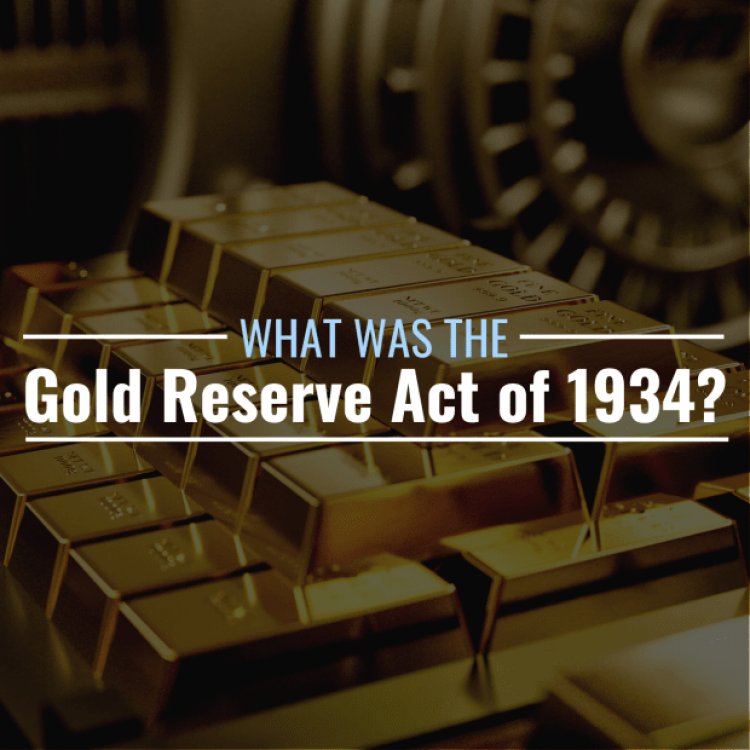What Was the Gold Reserve Act of 1934? Definition & Impact
What Was the Gold Reserve Act of 1934? The Gold Reserve Act of 1934 prohibited private ownership of monetary gold, and was the culmination of President Franklin D. Roosevelt’s gold program aimed at helping to boost the flagging U.S. economy. Roosevelt signed the act on January 30, 1934, less than a ...


What Was the Gold Reserve Act of 1934?
The Gold Reserve Act of 1934 prohibited private ownership of monetary gold, and was the culmination of President Franklin D. Roosevelt’s gold program aimed at helping to boost the flagging U.S. economy. Roosevelt signed the act on January 30, 1934, less than a year after taking office.
The act allowed the government to raise the price of gold, control the value of the dollar, and put more money in circulation.
Among the law’s many directives, the government’s holding of the precious metal was transferred from the Federal Reserve to the U.S. Department of the Treasury, diminishing the central bank’s role in maintaining gold coins and bullion.
The act was the pinnacle of Roosevelt’s gold program—specifically policy measures that seized gold and abandoned the gold standard—as a means of controlling the value of the dollar.
What Preceded the Gold Reserve Act?
The Great Depression started with the stock market crash of October 1929—millions of Americans became unemployed, credit was difficult to come by, and the economy collapsed. Roosevelt was elected president in 1932 on the hopes that he would lead the country onto a path of economic recovery and prosperity.
One of the biggest challenges to the U.S. economy was the lack of credit being made available to many Americans. Without loans, people were unable to spend for their everyday livelihoods, and, in turn, the lack of spending and money in circulation kept the economy from growing.
In his first year of office, Roosevelt implemented measures that were designed to stimulate the economy. Among them was the seizure of gold coins and certificates that were in the private hands of Americans and businesses. The U.S. relied on the gold standard—which backed the dollar and allowed dollars to be converted into gold at a fixed rate—and the Federal Reserve had more than enough gold reserves to sufficiently support the dollar. The Gold Standard Act of 1900 replaced silver with gold as the standard for the U.S. dollar, setting the price at which the government bought a troy ounce of gold at $20.67.
Bank Holiday
In early March 1933, many businesses and Americans, as well as foreign investors who feared a devaluation of the dollar, sought to convert their dollars into gold, but the Federal Reserve was concerned that faced with a sudden surge in demand it would not be able to meet all requests immediately.
Roosevelt—who had just recently assumed office—then declared a bank holiday, a move that suspended all banking transactions for a week, and he later signed the Emergency Banking Act, which gave the president broader powers over banks during a banking crisis. These actions helped to prevent a bank run, and by the time banks reopened, there were more deposits than there were withdrawals.
Suspension of the Gold Standard
In the spring and summer of 1933, Roosevelt suspended the gold standard to stem withdrawals of gold. Exports of gold were prohibited, and the Treasury and financial institutions were prevented from converting dollars and deposits into gold coins and ingots. The government also reduced the gold content of the dollar by as much as 50%, and allowed silver as an additional backing of the dollar.
On April 5, Roosevelt signed Executive Order 6102, which gave Americans until May 1 to transfer their gold coins, bullion, and certificates to the Federal Reserve or face up to 10 years in prison or a $10,000 fine, or both. Under the order, the government would buy an ounce of gold at $20.67, the dollar value of the precious metal set by the Gold Standard Act of 1900. The Secret Service, which operated under the Department of Treasury, was tasked with seizing gold from violators of the 1934 law.
Ultimately, the measures implemented in 1933 gave the U.S. government exceptional powers to seize gold from Americans and set the stage for the Gold Reserve Act. The U.S. faced an unprecedented crisis that called for extraordinary measures.
What Did the Gold Reserve Act Accomplish?
The act formalized many of the actions that had started in 1933. One of the law’s important measures was an increase in the purchase price of gold to $35 an ounce, which effectively devalued the dollar by 59% and ended the fixed price of $20.67 an ounce set at the end of the 19th century.
The gold standard constricted the U.S. government from expanding the nation’s money supply because dollars were fixed to the supply of gold, so its suspension gave the government flexibility to increase the money supply. By abandoning the gold standard, the government was also able to manipulate the country’s currency via a devaluation.
Increasing the amount of gold reserves and raising the price per ounce meant that there would be more money in circulation. That allowed prices to rise back to reasonable levels and give a boost to economic activity. Americans had more money in their pockets, which they would spend, and that money circulating in the financial system and the economy helped to shore up banks’ balance sheets and to keep businesses open. A devalued dollar also made it competitive with currencies of other nations, and made dollar-based assets cheaper for foreigners to invest in.
Gold was controlled by the Treasury Department, but gold bullion bars were held in custody by the Federal Reserve at vaults in their buildings.
What Is the Exchange Stabilization Fund?
The law also established the Exchange Stabilization Fund (ESF) to control the dollar’s value via the buying and selling of gold, foreign currencies, financial securities, and other financial instruments. It was created with $2 billion in profits when the fixed gold rate was increased.
How Long Did the Gold Reserve Act Last?
The act remained in effect until President Nixon removed the gold standard in 1971, when the U.S. ended the exchange of gold for dollars.
What Is a Lasting Legacy of the Gold Reserve Act?
The Exchange Stabilization Fund remains an important function of the Treasury. Its responsibilities broadened with the establishment of the International Monetary Fund to include holding special drawing rights (SDR) assets, and to provide financing to foreign governments.
What's Your Reaction?



























































